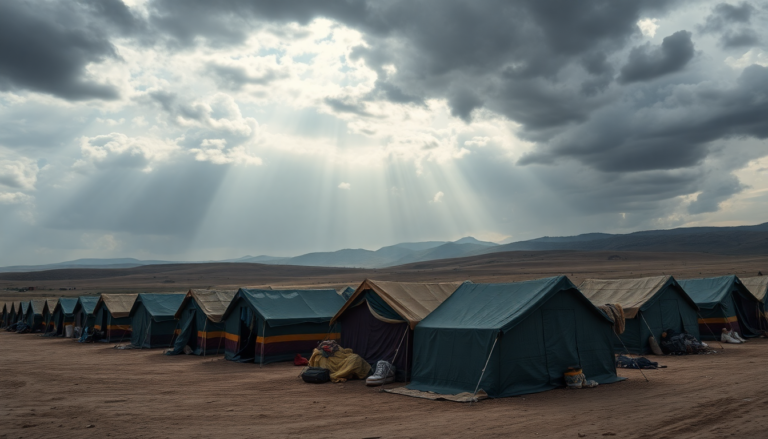Argomenti trattati
Have you ever stopped to think about what it means to be uprooted from your home? The experience of internal displacement is not just a statistic; it’s a reality that millions face worldwide, often with heartbreaking consequences. Internal displacement refers to the phenomenon where individuals or groups are forced to flee their homes but remain within their country’s borders. It’s a complex issue that intertwines with conflicts, disasters, and socio-economic factors. Let’s dive into this pressing topic and unravel the stories and statistics behind it.
The growing numbers of internally displaced persons
As recent reports highlight, the numbers of internally displaced persons (IDPs) are staggering. According to the Internal Displacement Monitoring Centre, there are over 50 million people currently living in displacement across various regions. This figure, which has surged in recent years, reflects not only the ongoing conflicts but also the increasing impact of climate change and natural disasters. Personally, I remember when I first encountered stories of families forced to abandon everything they knew. It’s a gut-wrenching affair, especially when you consider the psychological toll it takes on individuals, often leading to long-term trauma.
<h3.The causes of internal displacement
Understanding the root causes of internal displacement is crucial. Conflicts, whether civil wars or political unrest, often lead to mass evacuations. For instance, in regions like Syria and Yemen, the violence has uprooted entire communities. But let’s not overlook the growing role of environmental factors. As temperatures rise and natural disasters become more frequent, many people find themselves displaced due to floods, hurricanes, and droughts. It’s a vicious cycle: more displacement leads to more instability, and more instability leads to even greater displacement. I can’t help but think about the resilience of those affected—an inspiring yet heartbreaking reality.
Personal stories behind the statistics
When we talk about internal displacement, it’s easy to get lost in numbers. Yet, behind every statistic, there’s a story. Take the example of Maria, a young mother from Central America who had to flee her home due to gang violence. Her journey, filled with uncertainty and fear, is a testament to the strength of the human spirit. Stories like hers remind us that these are not just numbers; they are lives disrupted, families torn apart, and dreams shattered. As someone who has met displaced individuals during my travels, I can attest to the profound impact these experiences have on their outlook on life. Each person carries a unique narrative, one that deserves to be heard.
The role of organizations in aiding IDPs
Various organizations play a pivotal role in addressing the needs of IDPs. The United Nations High Commissioner for Refugees (UNHCR) and numerous NGOs work tirelessly to provide shelter, food, and medical assistance. However, these efforts often face significant challenges, including funding shortages and political barriers. I remember visiting a temporary shelter and witnessing the dedication of volunteers who often work around the clock with limited resources. Their commitment to alleviating the plight of displaced individuals is nothing short of heroic. Yet, sometimes it feels like a drop in the ocean compared to the scale of the crisis.
Looking ahead: The future of internal displacement
What does the future hold for internally displaced persons? With conflicts persisting and climate change worsening, the situation may seem grim. However, there’s a growing recognition of the need for comprehensive policies to address the root causes of displacement. Innovative solutions, such as community-based rehabilitation programs and investment in local economies, are gaining traction. As many know, change doesn’t happen overnight, but there’s hope. In my view, increased awareness and advocacy can lead to more effective solutions. Perhaps one day, we will look back and see how collective efforts transformed the lives of countless individuals.
Final thoughts on internal displacement
In the grand scheme of things, internal displacement is not just a humanitarian issue; it’s a human rights concern. Each displaced person deserves dignity, support, and a chance to rebuild their lives. As we navigate this complex landscape, let’s remember the importance of empathy and action. The stories of those affected inspire us to advocate for change, ensuring that their voices are heard and their rights upheld. After all, we are all part of this global community, and as the saying goes, “A rising tide lifts all boats.” It’s time for us to be the tide that lifts the voices of those in need.

